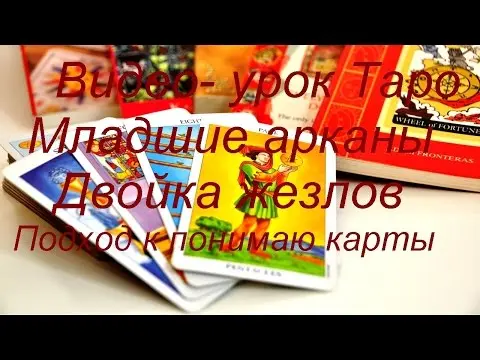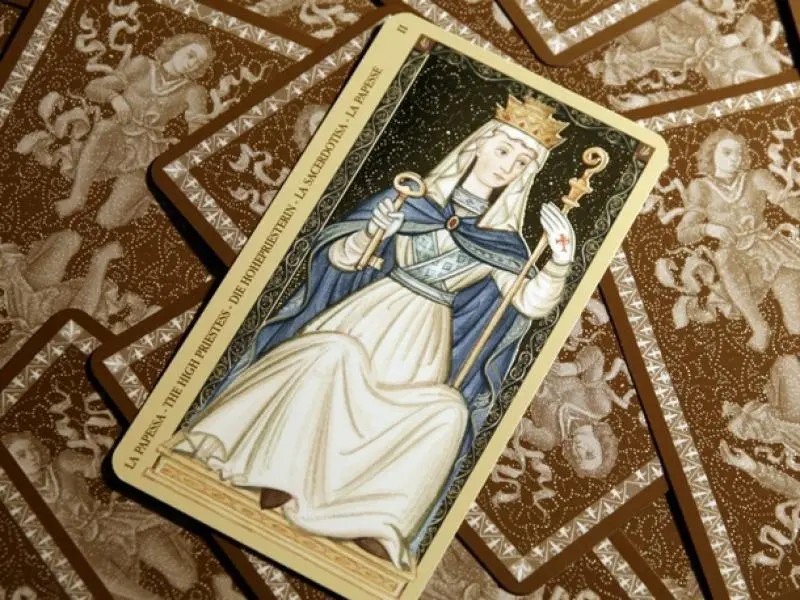
Tarot School: Lesson I - What you need to know about Tarot cards?
The Tarot deck was certainly the ancestor of our modern playing cards, and like them, it can also be used for divination. But esotericists see in the Tarot, especially in its twenty-two-card grand Atu, something much more important than the usual set of pictures intended for entertainment or divination. Which?

Tarot should be a complete system. characters, which are the key to the universal mystery. There is a hidden knowledge of the true nature of man, the universe and God. These pages show traces of a wide variety of influences: Kabbalistic, Hermetic, Gnostic, Catharic, and Waldensian. It is assumed that these cards came either from China or from India, from where they were transmitted to Europe through gypsies. Others claim that they were invented by participants in a Kabbalistic conference in 1200. Many esotericists believe that the Tarot contains the secret knowledge of Ancient Egypt, and the system itself was created by the French scientist Freemason Antoine Court de Gebelin (1725-84) at a time when there was a huge fashion for Egypt.
Read also: Tarot School: Lesson II - What are the main features of the images of the Great Arcana?
The fact is that the origins of the card game are lost somewhere in the fog of history, and no one really knows where, when, how and why the tarot was created. Some decks that have survived to this day were reportedly made for the mad king of France at the end of the XNUMXth century, Charles VI. There are also several examples from the fifteenth century, intended both for study or recreation, and for entertainment.
Italian deck by Andrea Mantegna
The Italian deck, attributed to Andrea Mantegna, consisted of 50 cards, depicting, for example, ten states of man, Apollo and nine Muses, ten teachings, three foundations of the universe and nine Virtues, seven planets and three fixed star spheres, the prime mover and the root cause. It was possible to play such cards and at the same time learn the order and structure of the universe. When properly positioned, they formed a "symbolic staircase leading from heaven to earth." This ladder, read from the bottom up, indicated how a person can gradually ascend to the realm of the spirit.
See also: Tarot School: Lesson III - Great Atu Interpretation: Fool, Juggler
What is a tarot deck made of?
This can be applied - and esotericists no doubt do - to the very idea of the early Tarot, because its symbols, unlike the Mantegna deck, cannot be easily arranged in some simple, unambiguous pattern. There are several variants of the Tarot deck, with different designs and different names for colors or strengths. Currently, the generally accepted deck consists of 78 cards. Less important of them (minor arcana) - four suits of 14 cards each: king, queen, jack, squire and from ten to ace (black). The colors are as follows: Swords (spades in regular decks), bowls (hearts), maces or clubs (clubs), coins or diamonds (punishment). They were supposed to represent the four sacred objects of the Grail legend, namely the sword, cup, spear, and platter. Much more importance was attached to 22 special cards - Great Atu or major arcana. Their correct order is not constant, but they are usually ranked as follows:
0) Fool
1) Juggler
2) Dad
3) Empress
4) Emperor
5) Dad
6) Lovers
7) Trip
8) Justice
9) Hermit
10) Wheel of Fortune
11) Power
12) Executioner
13) Death
14) Moderate
15) Devil
16) Tower of God
17) Star
18) Moon
19) Sun
20) Last Judgment
21) Peace.
Later researchers, including A. E. Waite and Aleister Crowley, produced their own tarot decks, modifying old drawings to approximate the correct symbols. Perhaps the most famous, although, unfortunately, extremely ugly, is the waist made by Pamela Colman-Smith under the direction of A. E. Waite.
www.okulta.com.pl
www.okulta.pl
Leave a Reply